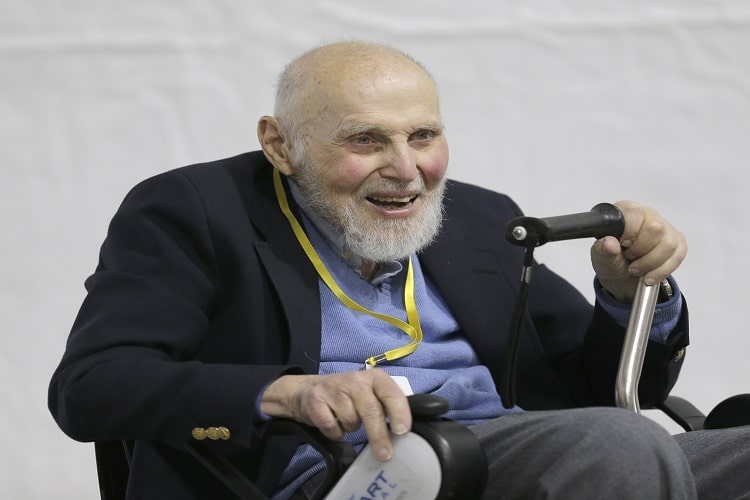Arthur Ashkin (2 September 1922 – 21 September 2020) was an American scientist. Arthur Ashkin was honored with the Nobel Prize in Physics in 2018.
Life and Career
Arthur Ashkin was born on 2 September 1922, in Brooklyn, New York, USA.
Ashkin earned his Bachelor of Science degree in Physics from Columbia University in 1947. He then pursued a Ph.D. in Nuclear Physics at Cornell University, where he conducted research under the guidance of Nobel laureate Hans Bethe. He completed his Ph.D. in 1952.
After completing his Ph.D. in Nuclear Physics from Cornell University in 1952, Ashkin began his career as a scientist. He worked at Columbia University’s Radiation Laboratory and later at the Brookhaven National Laboratory, where he conducted research in nuclear and particle physics.
In 1952, Ashkin joined Bell Laboratories, a renowned research and development organization, where he would spend the majority of his career. At Bell Labs, he initially worked on various research projects, including studies related to microwave physics and solid-state physics.
Ashkin’s most significant contributions came during his time at Bell Laboratories, where he worked for many years. In the 1970s and 1980s, he developed the optical trapping and manipulation technique, which allowed scientists to use highly focused laser beams to manipulate tiny particles, including atoms and biological cells. This groundbreaking work opened up new possibilities in biology, physics, and other fields.
Ashkin’s research had wide-ranging applications. Optical tweezers enabled scientists to manipulate and study biological molecules, cells, and colloidal particles. This technology had a profound impact on fields such as biophysics, microbiology, materials science, and nanotechnology.
Arthur Ashkin passed away on 21 September 2020, in Rumson, New Jersey, United States.
Award and Legacy
Arthur Ashkin was honored with the Nobel Prize in Physics in 2018 for his groundbreaking work in the field of optical trapping and manipulation. He shared the prize with Gérard Mourou and Donna Strickland.
Ashkin’s legacy is profound and far-reaching. His development of optical tweezers revolutionized various scientific fields, including biology, by enabling researchers to manipulate and study biological molecules, cells, and even bacteria with extreme precision. This technology has applications in areas such as medical research, nanotechnology, and materials science. His work laid the foundation for countless advancements and continues to inspire scientists and researchers worldwide.

